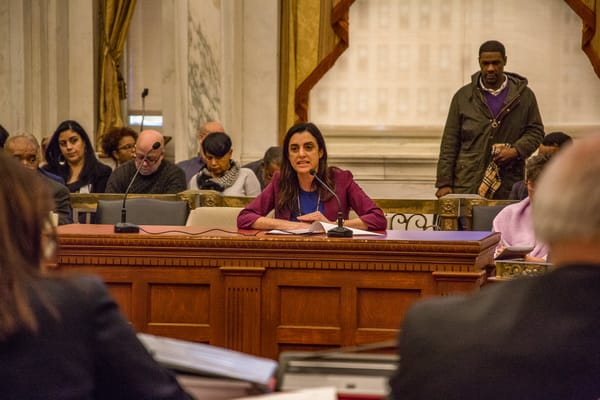Steve Bannon, Minister of Propaganda

As the headlines on August 18th blared out the news of Steve Bannon’s firing, a wave of relief seemed to grip many of President Donald Trump’s opposition. From moderate Republicans, news anchors and journalists, to liberals, leftists and intellectuals, the feeling was of triumph, of invigoration at such a blow to this most beleaguered of Presidents. This “dismissal” of fascism incarnate seemed the culmination of all of the resistance put forth by these united American forces since Donald Trump’s inauguration. Such self aggrandizement does little to address the reality of the situation; that Steve Bannon’s firing leaves him more dangerous and able than before.
The restrictions of being the government in a country like America, in 2017, was never conducive for Steve Bannon’s strengths. He works best when controlling the validity and angle that information is presented to the public in. As an American government official, a top advisor to the President of the United States, he could not shape the narratives surrounding his boss’s administration, or around his utilization within it. He therefore, began taking criticism from a media that considered him an “alt-right” figure, incredibly close to the most powerful figure in the world, and from peers within the administration. According to a New York Times reports, Bannon was originally slated to be fired alongside Reince Priebus weeks prior, before Head of Communications (for ten days) Anthony Scaramucci singled out Priebus in his now notorious New Yorker interview. Unable to effectively control the distribution of information while trapped inside the White House, aiding a President who received continuous negativity about Bannon’s appointment from within and without his White House, left him neutered as a true political force. Apart from validating many of the President’s own primal concepts for social and economic “reform”, by April, he had been largely neutralized within the very administration he helped build a base for. So what changed from then to now?
The Charlottesville Protests, and the president’s repeated conflicting clarifications set off a firestorm of condemnation. The unequivocal rejections of his abhorrently weak rebuke of White Nationalists, whom he morally lumped together with counter-protesters, came from nearly every corner of the country. The waffling between the president’s first and second statements is evidence of the broad political disconnect within the Trump administration’s highest echelons, as well as the influence that Steve Bannon and his idealogues were still wielding over Trump himself. The appearance of influence created tension within the administration. This pressure found its release in the firing of Steve Bannon. While perhaps another example of the President’s tendency to make major staffing changes on the fly, it inadvertently leaves his former advisor in a better position to control and manipulate his constituency and its flow of the national information drug, “Propaganda”.
The Friday firing distanced Donald Trump from the man and movement that helped place him in the very position he has used since to embarrass those very same individuals. He simultaneously relieved pressure coming from the media, his administration, and his own party. Unchaining his most resilient and vicious attack dog, to roam freely back into the public forum, as a private citizen, to provide that which earned him his recently relinquished position in the first place, is perhaps one of the first positive consequences generated by the Trump administration in its short tenure. The “intellectual” compass of much of the alt right ideology of the last few years, his return to lead the very same individuals who marched with torches chanting the Nazi “Blood and Soil” slogan that so many Americans once died to keep from ever blemishing American ears, is now free to direct the movements and manifestations of his followers.
America has no governmental Minister of Propaganda, as the Germans and Italians had 80 years ago. The very fabric of American mythos makes even the concept of that position laughable. Americans, for all of their distrust for information expounded by the government, have very few qualms as it relates to information from private outlets. The only limits news outlets face are the audience’s cultural and intellectual inclinations.
The significance of Bannon’s firing in this light should be clear. After withering away in purgatory, he can now reclaim his spot as the private, unaffiliated Minister of Propaganda for the Trump administration. He can act as a Trump surrogate, without having to worry about the politics of maintaining his position within the administration. He can push Trump agenda points that were being muted while he languished inside the White House, with no means of overpowering the choir of voices attempting to move the President in all directions but his. He is free to mold both public opinion and the news of which has acted as a crippling agent to the president’s agenda since the day he won. His newly found freedom from bureaucratic restrictions allows for his core ideas to flow through his base, as vehemently as they did when its purpose was to elect Donald Trump as President. He will aim his “killing machine” (Breitbart) at all of those who contributed to his early exit from the public sector, from fellow White House peers, to politicians, their politics and those respective constituencies.
It was always going to be interesting to see how Steve Bannon’s eventual departure would affect Breitbart coverage and his own personal relationship with the President. That much of the animus is being aimed towards the President’s most influential advisors reflects what must be seen as motivation for Bannon. Steve Bannon believes the President is a mere reflection of the voice in his ear at the moment. There is a belief that, if his “killing machine” can drive the President’s base towards certain ideas and conclusions, that it is perhaps the best way to control him. Donald Trump has proven resistant to any one voice for an extended period of time, growing frustrated when the results of their advice do not gain instant traction, or provide instant positive feedback for him. With Bannon now firmly in place to speak and trick his agenda into the public theatre of thought, the validation that both the President and his followers rely on swings back into high gear.
This is not to downplay the significance of his dismissal, rather, its importance is in fact accentuated. That the President would send his chief ideologue, one of only a handful in his administration who share so many of his primal world and domestic views, in order to relieve himself of such scalding and scathing rebukes, should demonstrate the magnitude of President Trump’s predicament. He could not hold onto his idealogue, his personal voice of reason, and has surrendered his firm grasp to the likes of “globalists” like General Kelly, Jared Kushner and H.R. McMaster, a betrayal to his base, whose support he can only expect to maintain if the man he just fired decides it serves his interests.
Mr. Bannon told the world his expectations and vision for himself moving forward. When he said he would be going to war for the President, his message was interpreted as further hyperbole from an administration of unthinkable rhetoric. This underestimates matters dangerously. Let us recognize that which has been demonstrated time and time again, that Fascism and its agents mutate as the circumstances call for it, and that vigilance is the only remedy. As one door closes, another swings a jar, a muted voice screams with the shrillest of fury.
Featured image is an English propaganda poster by the Parliamentary Recruiting Committee




